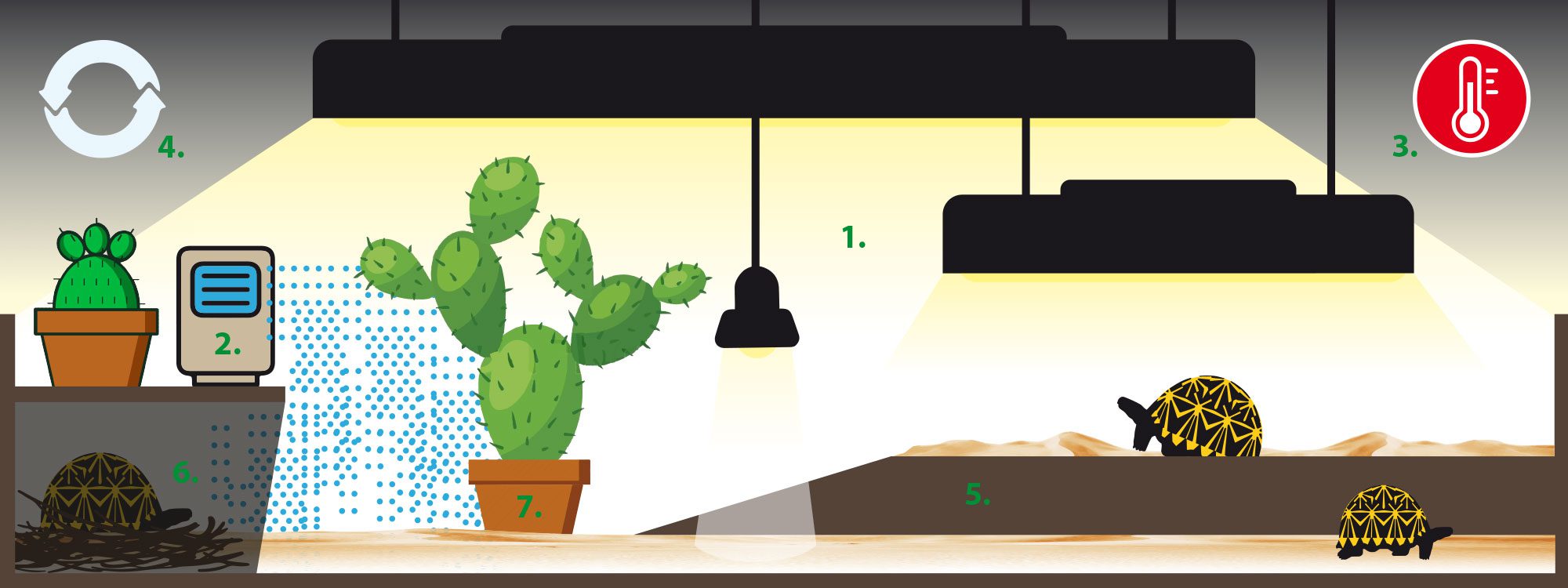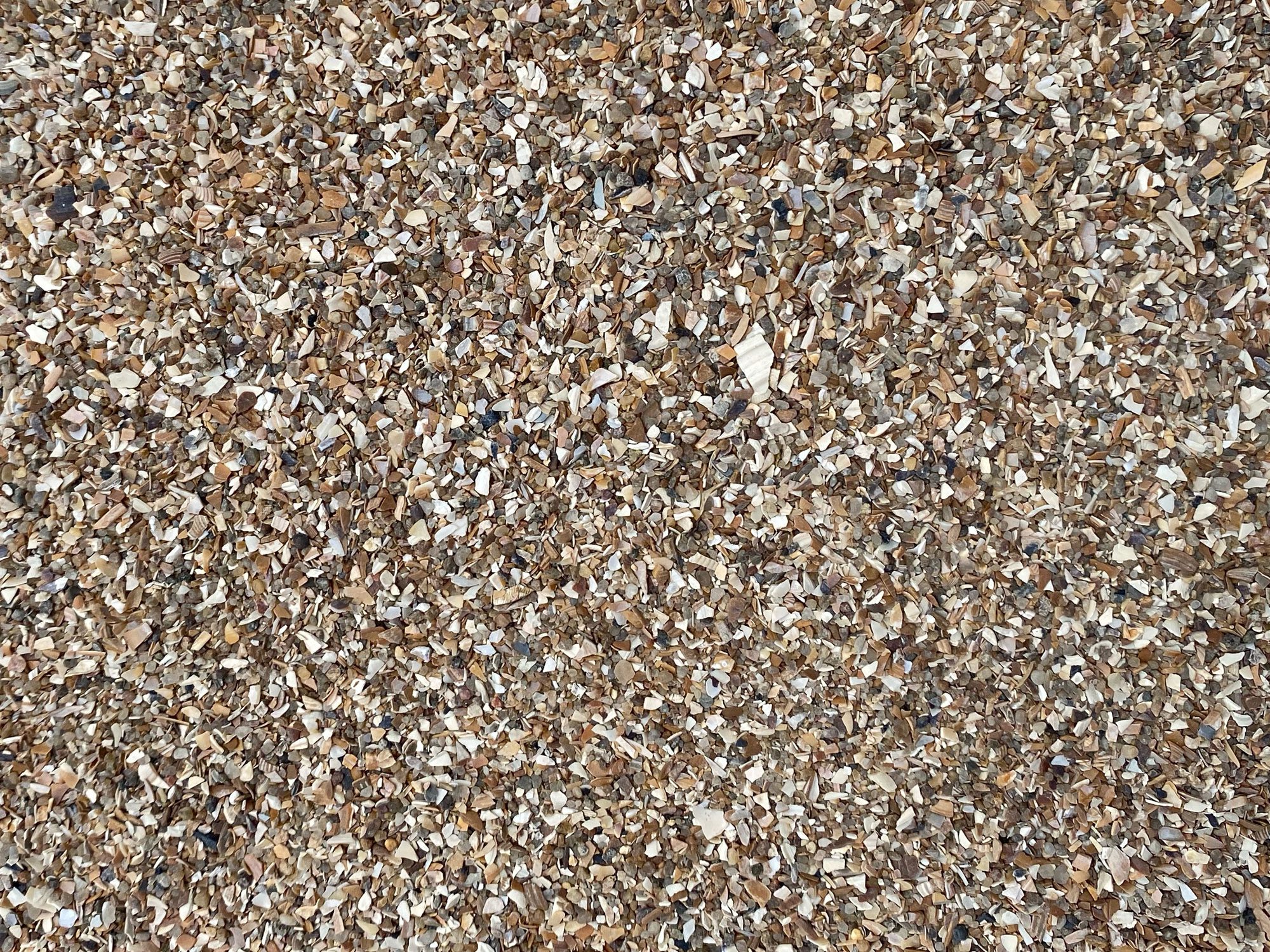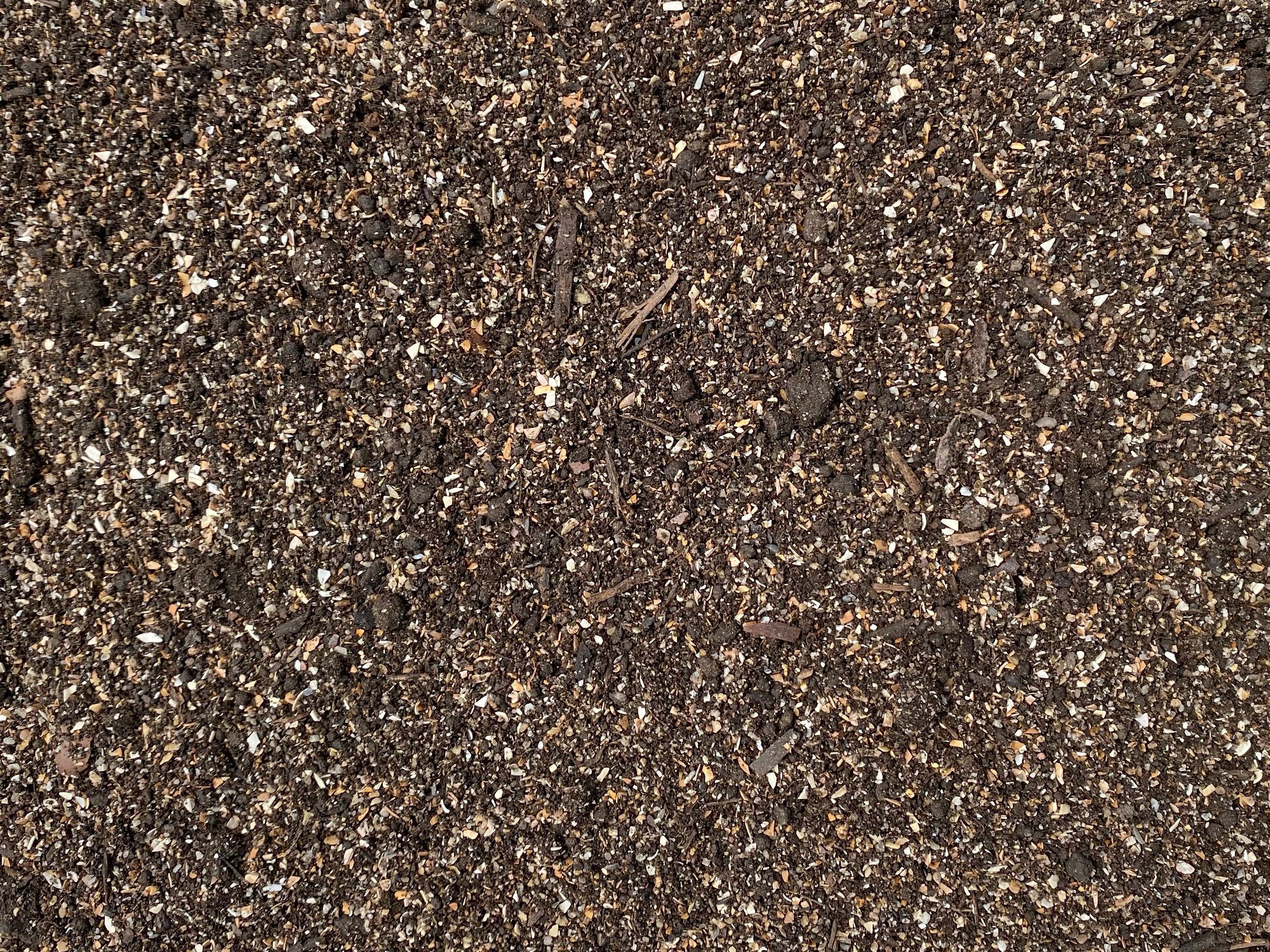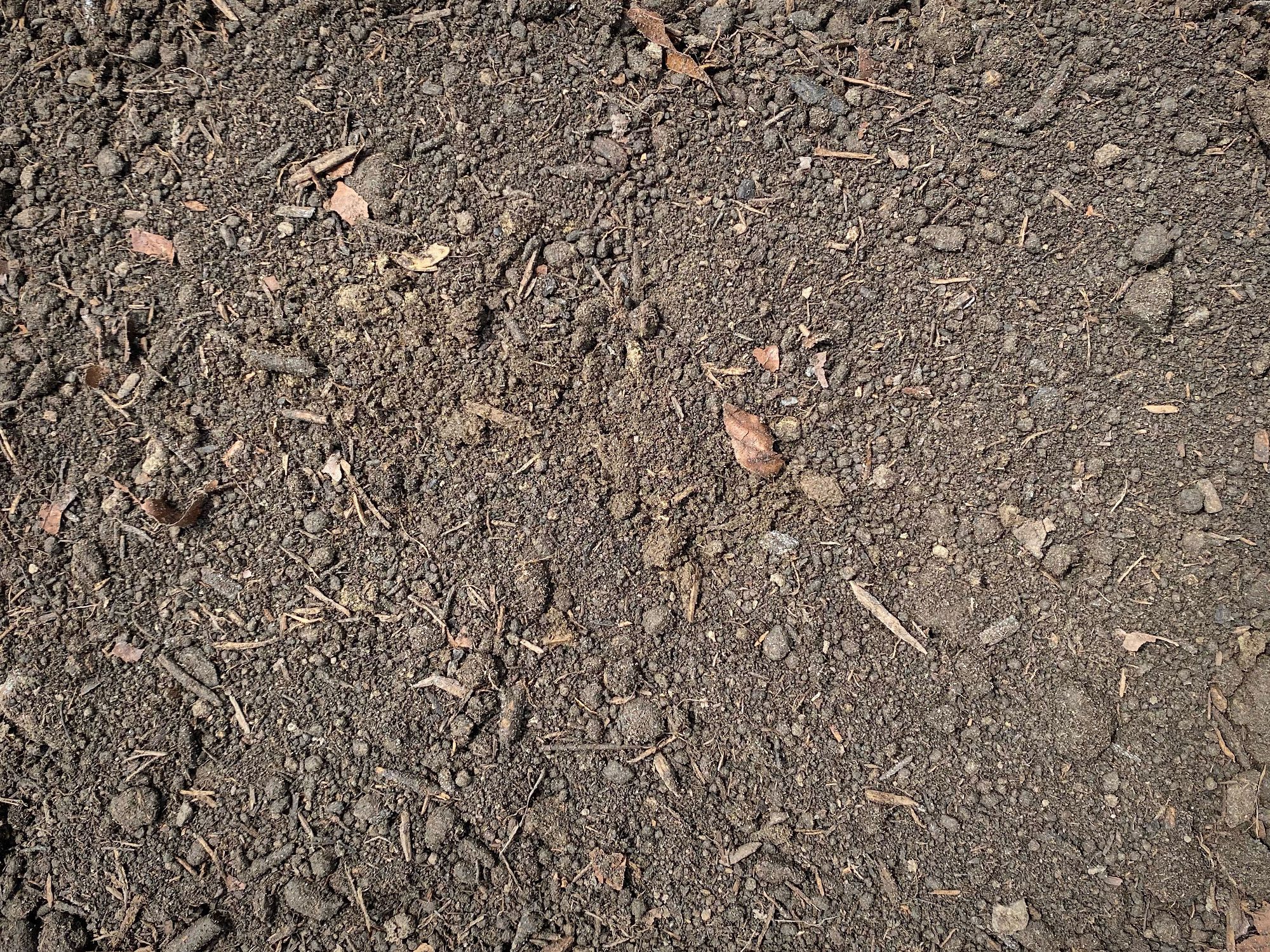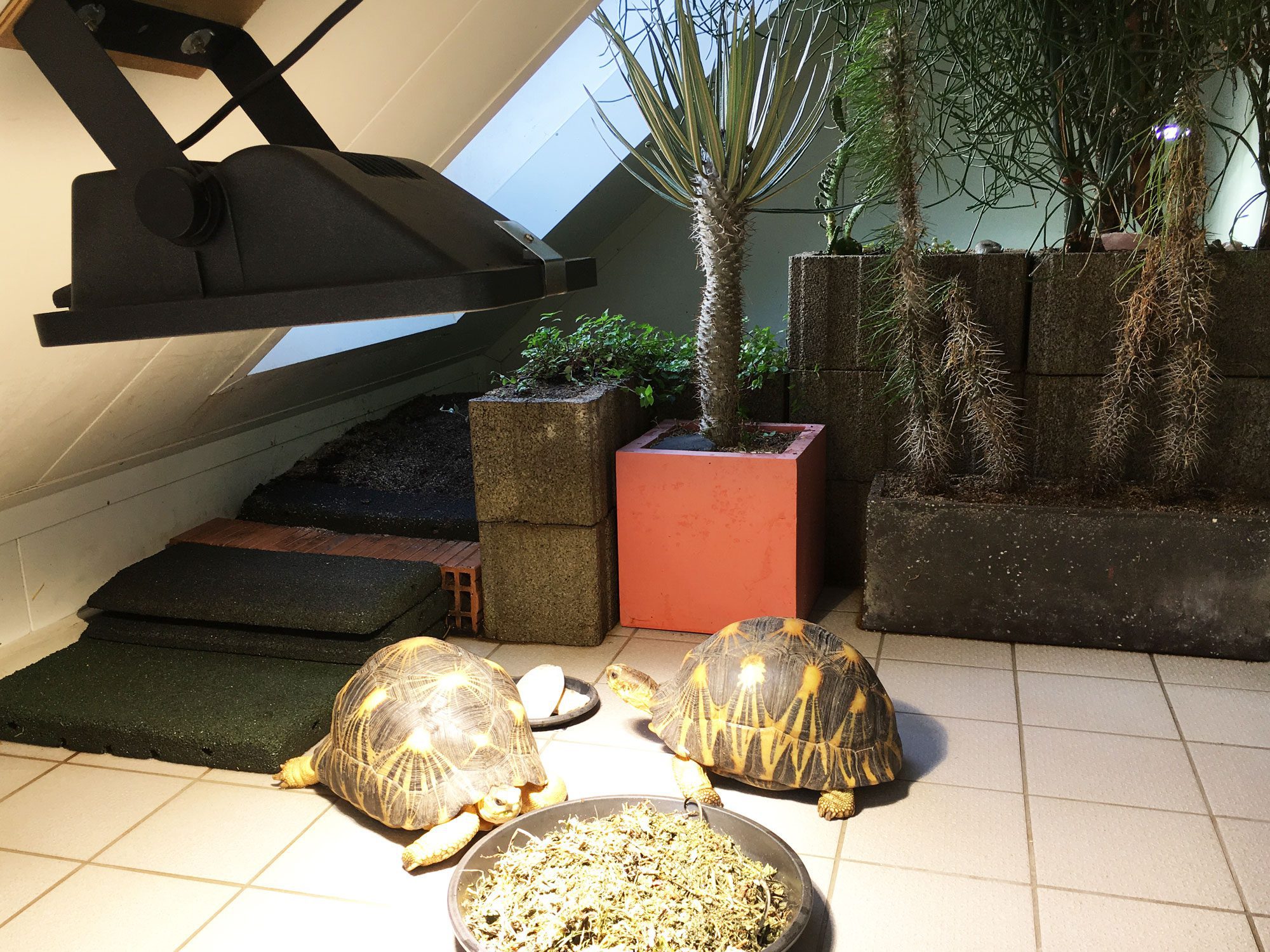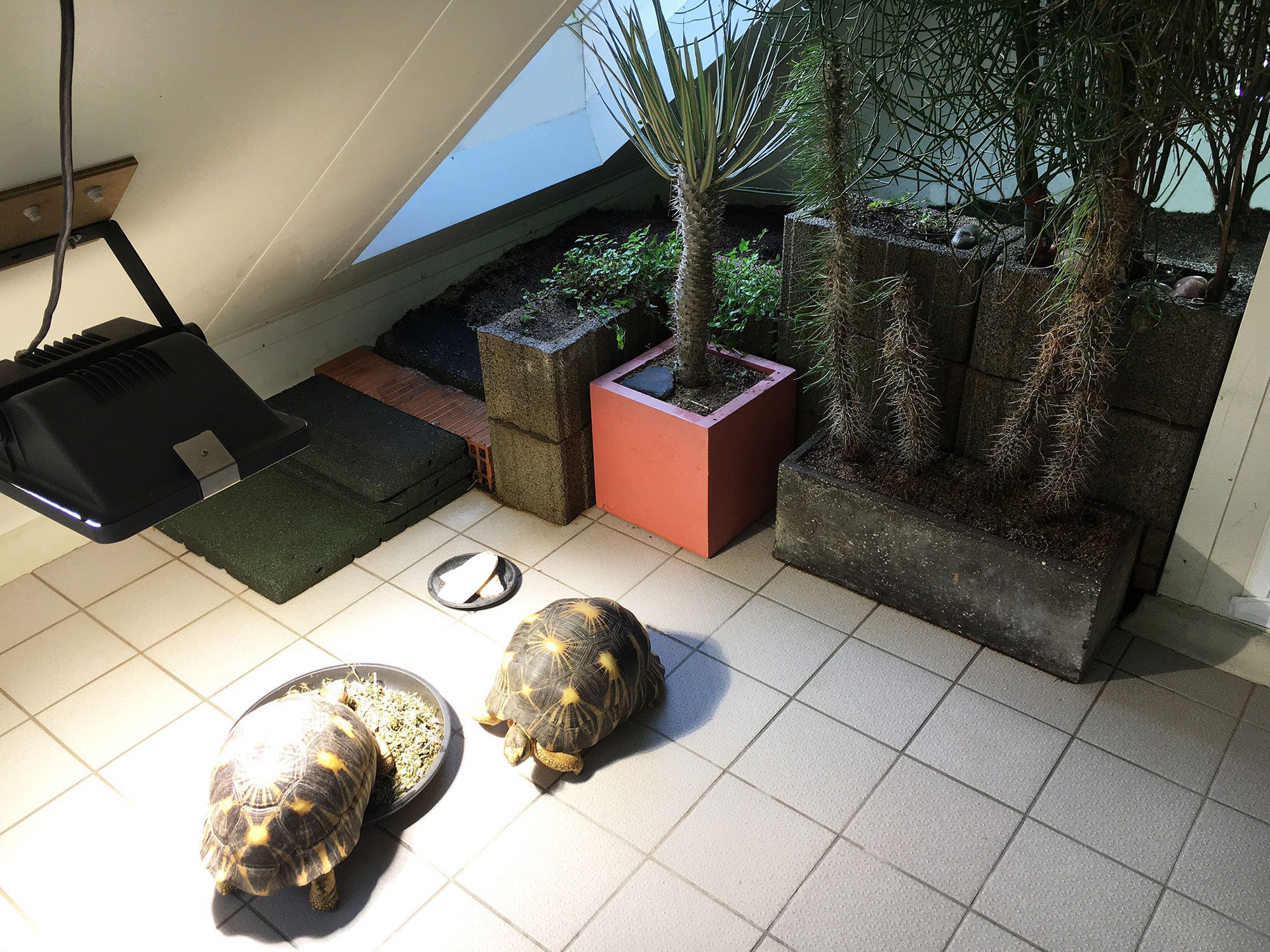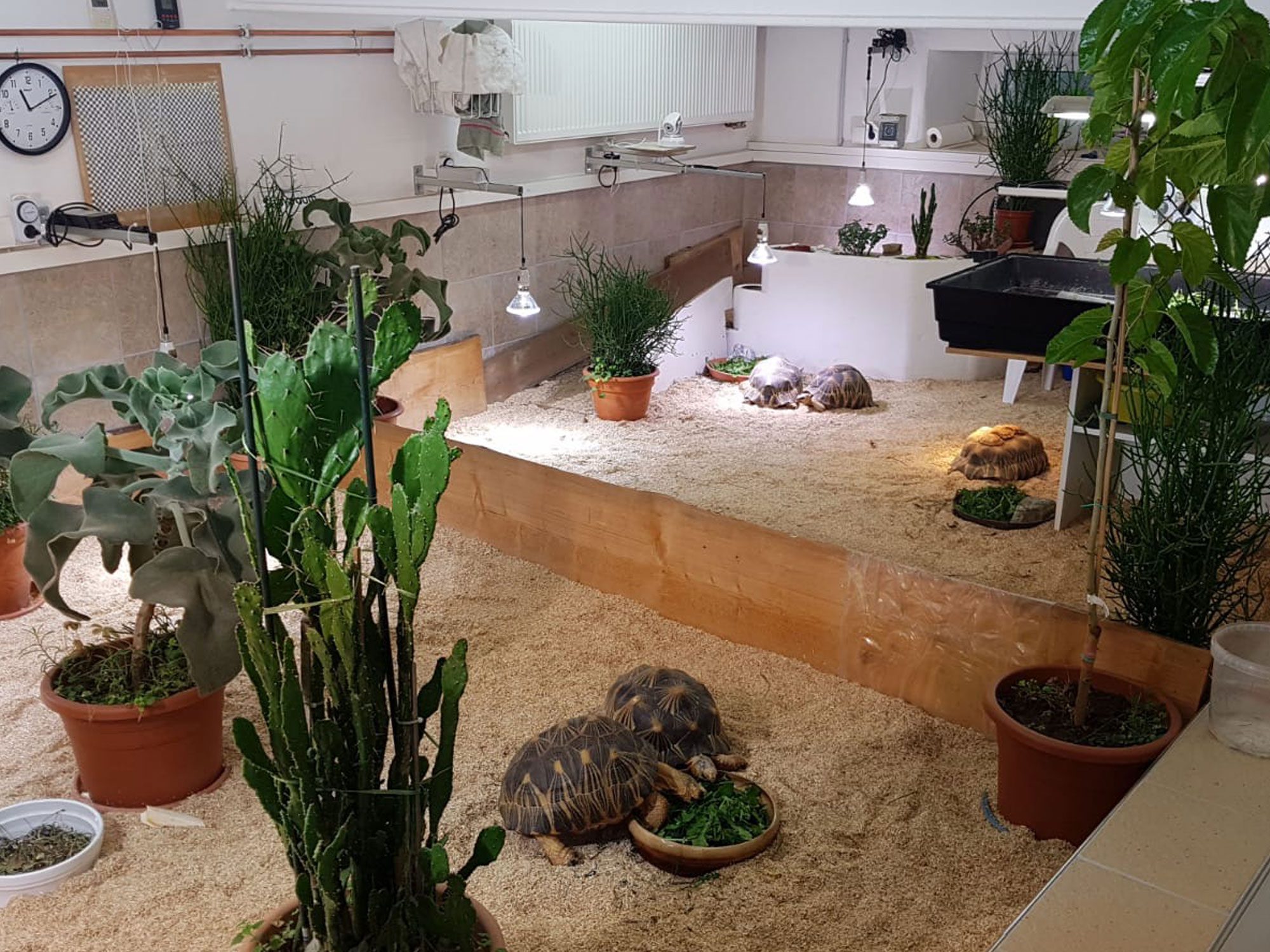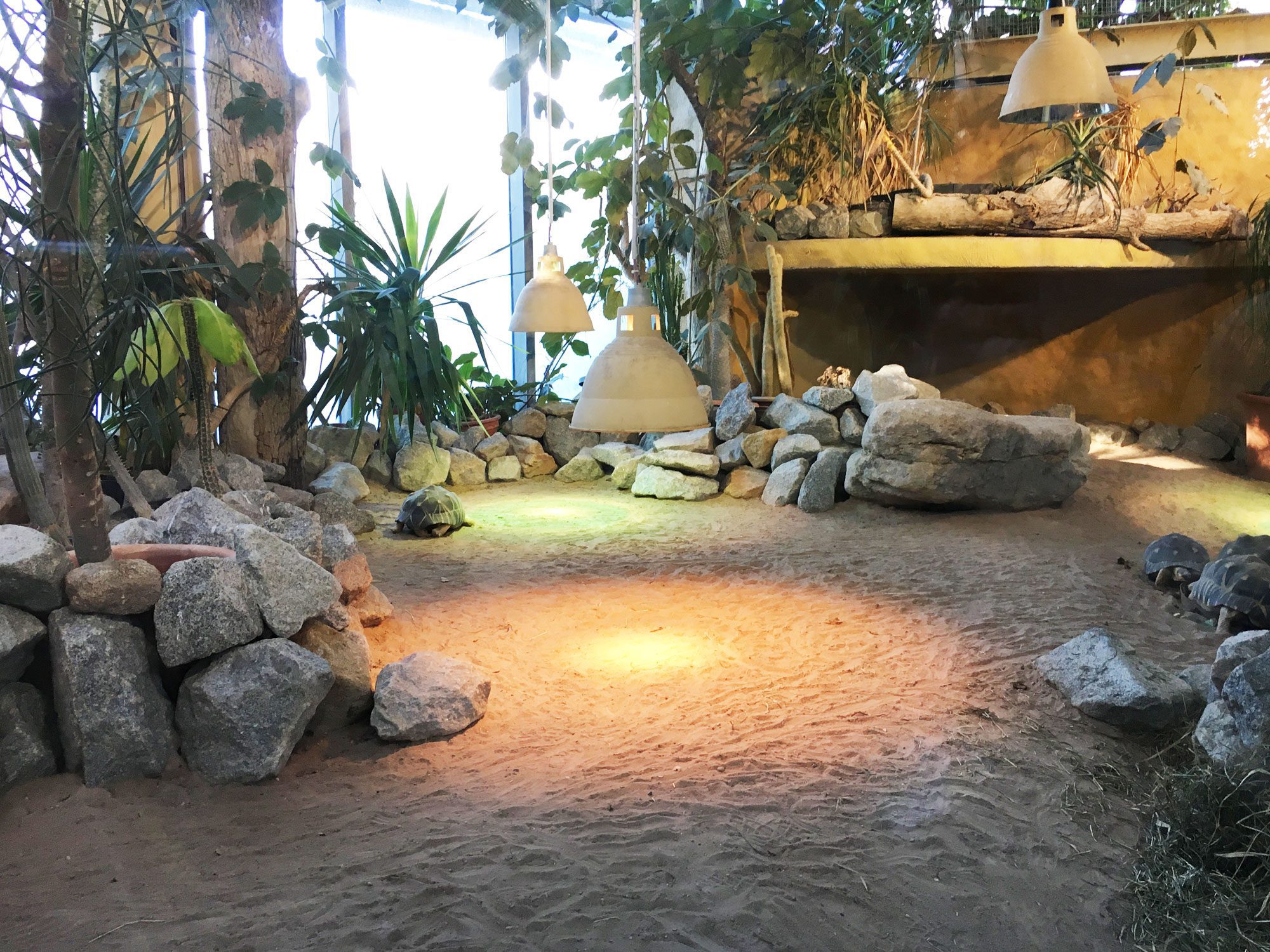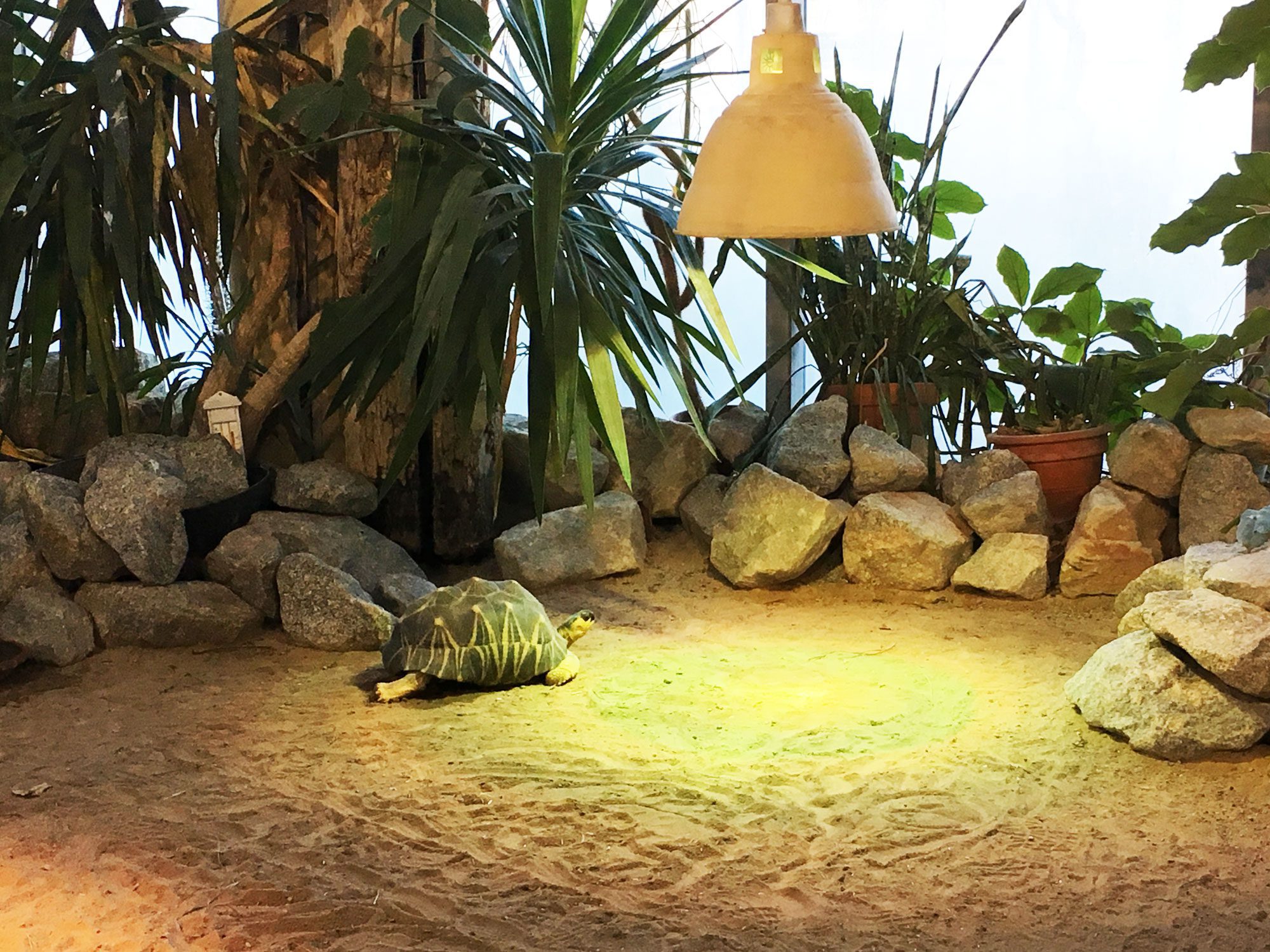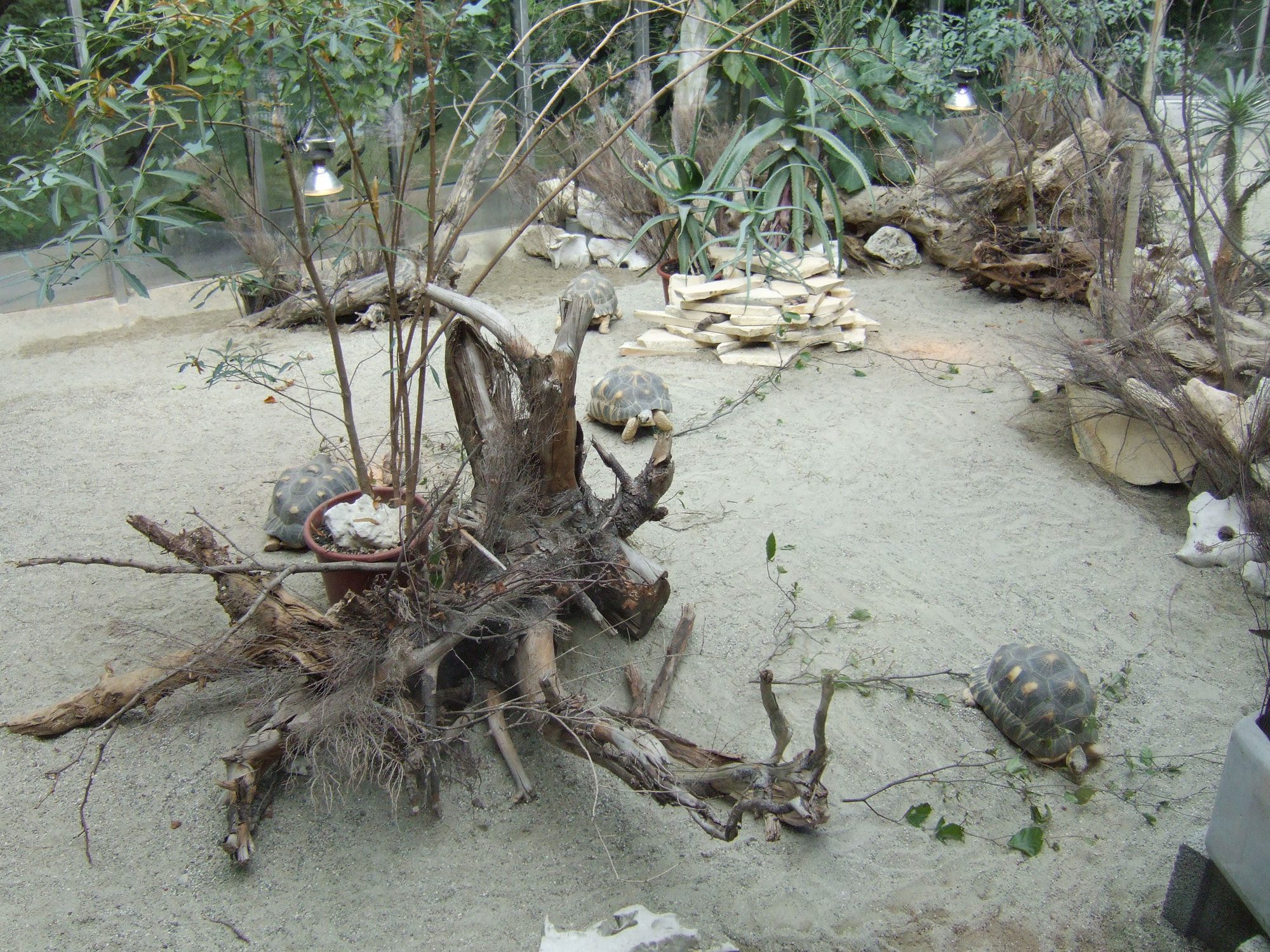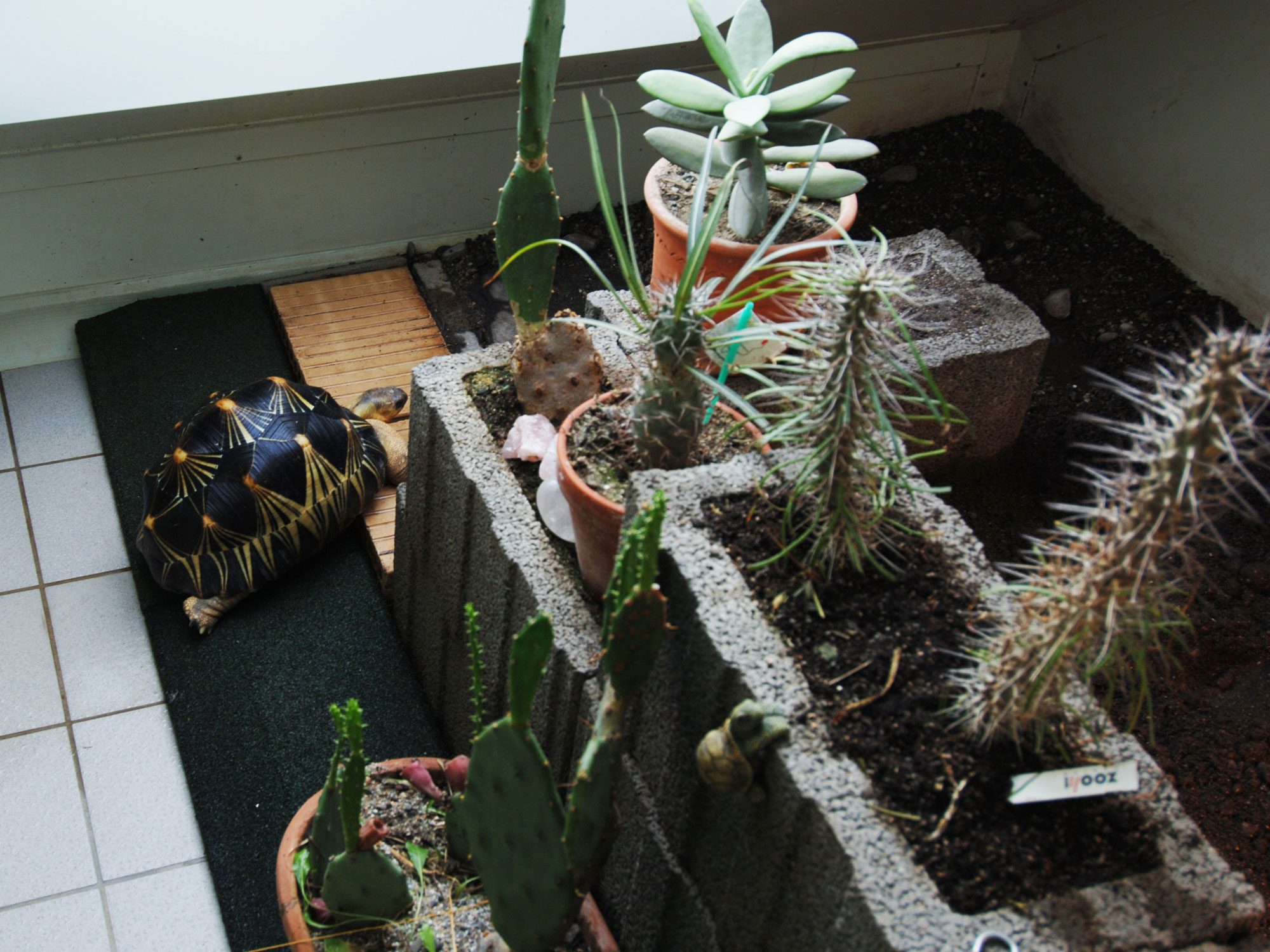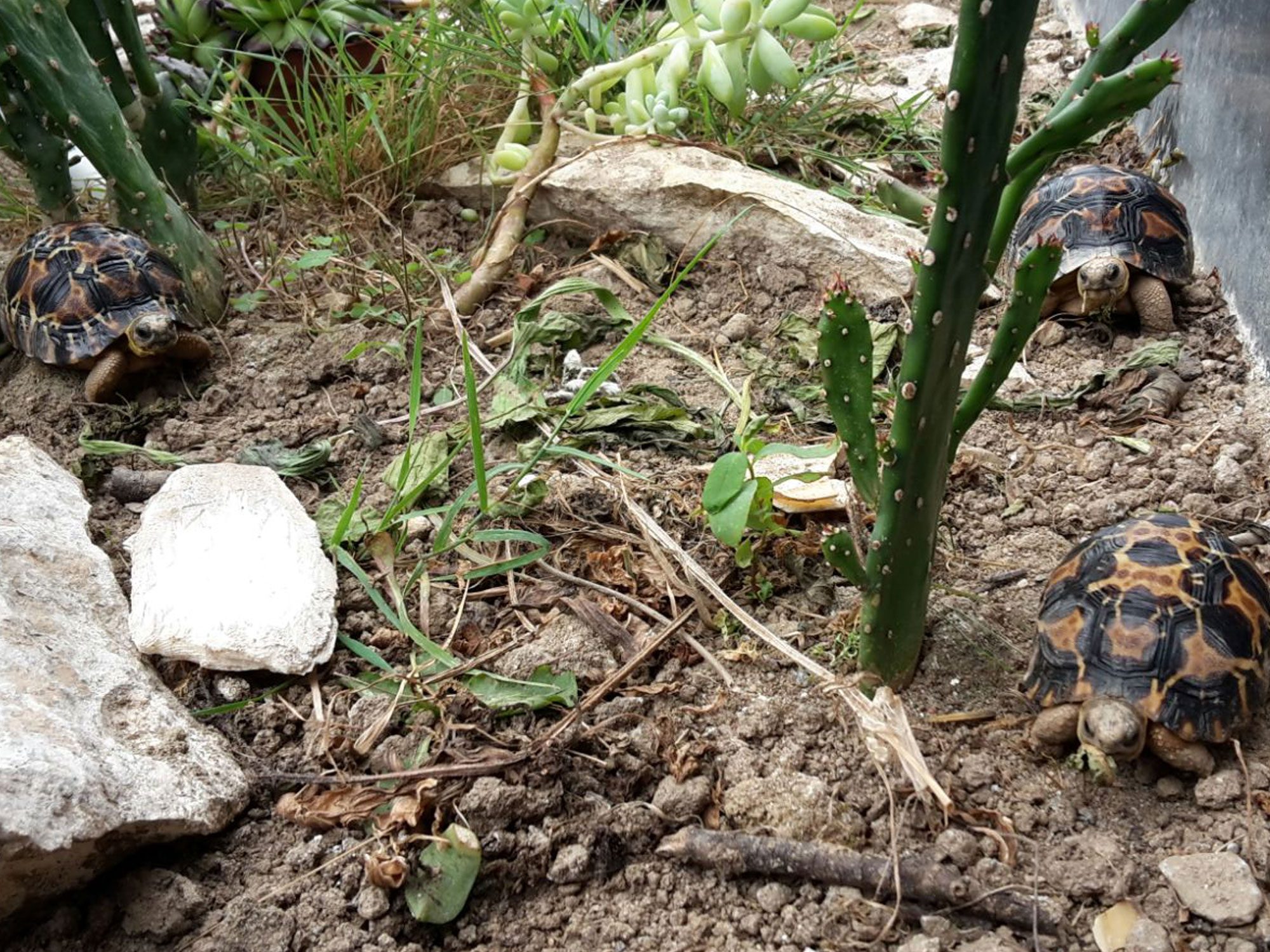Indoor plant
Since Astrochelys radiata originates from a subtropical climate zone, it does not hibernate. It is therefore necessary to keep Radiated Tortoises in our latitudes during the cold season in a heated and light-flooded indoor facility. This is especially for adult specimens with some effort in space and technical equipment. Basically there are different possibilities of indoor housing. Indoor housing situations that integrate natural daylight, such as conservatories, heated greenhouses or converted rooms with large, bright windows, have proven particularly successful. However, with professional lighting and appropriate infrastructure, converted basements, rooms or attics are also possible. A particular challenge indoors is creating a bright, warm daylight situation with a natural temperature gradient during the night and maintaining a high humidity (70-80%). The latter is difficult to accomplish in a living area due to mold growth. Hatchlings can be kept seasonally in very large terrariums only for the first few years of life. For hatchlings, open and easy-to-clean epoxy resin or plastic tubs in air-conditioned indoor environments have worked well.
It should be noted that Radiated Tortoises are not terrarium animals. It is not possible to keep Radiated Tortoises healthy in artificial conditions for a long time. Therefore, in our latitudes, the animals should be temporarily housed indoors only in winter or during persistent bad weather. The less natural daylight can be incorporated into indoor keeping, the less long Radiated Tortoises should be kept in it. Indoor keeping is usually not really close to nature and therefore always suboptimal. We therefore recommend never to keep Radiated Tortoises in an indoor area for longer than 5 months at the most. In our latitudes, species-appropriate husbandry concepts for Radiated Tortoises are only possible with combined outdoor and indoor husbandry.
The following diagram outlines the basic equipment of an indoor enclosure for adult Radiated Tortoises.
Substrates
In the coastal habitat of Astrochelys radiata, the soil consists mainly of water-permeable, calcareous sand and rock of maritime origin. In the dry forests, a thin layer of humus is formed by falling and slowly decaying leaves, which is mixed with sand and weathered debris. Near river courses there are open and dense grasslands with a humus layer that can absorb and store moisture during the rainy season.
Inspired by this terrain, we use the following substrate types in both indoor and outdoor plants: In the dry zone, under heat lamps and at sunny spots, calcium-containing shell grit/algrite sand in grain sizes 1-6 mm has proven to be most effective. This shell sand does not dust even in very dry conditions and serves as a calcium supplement. It can be easily washed and, if necessary, sterilized in the oven at 100°C. In the transition zone we mix shell grit/algrite sand in the ratio 1:1 with garden soil. We also use this mixture in deep layers on the laying mounds. It provides good stability when digging and can be moistened sustainably. By regularly digging over the laying mound, moist substrate from deeper layers reaches the surface and the consistency remains nice and loose, which makes females that are ready to lay more likely to dig. Outside the dry and transition zone, we use pure garden soil. However, this should be moistened regularly (humidifier, ultrasonic nebulizer, spraying), otherwise it dries out easily and quickly becomes pulverized and dusty from the constant walking and weight of the turtles. For juveniles, tufts of grass or other suitable hardy plants can also be introduced in areas with garden soil.
The hiding and sleeping places are plastered with straw and foliage, so that the animals can easily dig in. Radiated Tortoises like it when loose, tactile resistance can be felt around the shell during the night's rest. It gives them a feeling of security and safety. In the wild or in an outdoor enclosure, large tufts of grass, low bushes and undergrowth are therefore preferred as sleeping places.
Excrements must be removed from the substrates daily, generously with a shovel. Due to residual contamination, all substrates must be completely replaced and recycled after a certain time. Always pay attention to cleanliness and hygiene in the indoor area! Since we keep a larger group of adult animals and an overuse of substrates is pre-programmed, we do without substrate completely in a large part of the indoor facility and keep the animals directly on a non-slip tiled floor, which we spray off 2x a week with a hose and can easily clean with a brush. However, this partial, substrate-free keeping in the indoor area is only legitimate because the animals can switch to areas with substrate at any time (laying mound, sleeping area) and there is direct access to the natural outdoor enclosure, which the animals can use independently every day in good weather from March to October.
Base your substrate selection on the natural habitat of Astrochelys radiata. Substrates with the following characteristics should be avoided at all costs:
Our indoor facility
The indoor enclosure for our Radiated Tortoises is a winter garden-like construction with a roof that is flattened towards the south and in which two large windows are embedded. Since we live in central Switzerland in a region with rather long and harsh winters, the entire tortoise house is lined with thick and waterproof insulation walls (large cold room elements). The roof is also a robust and extremely snow-resistant construction. Natural daylight always falls through the two skylights even in the cold season and when the sky is cloudy. Sun rays falling through the glass windows additionally warm the turtle house. When the room temperature exceeds 35°C, the skylights open automatically to prevent overheating.
The floor in the interior has a slight slope and is covered with a non-slip and easy-to-clean industrial tile floor. Partial floor heating is incorporated under the tiled floor and provides a room temperature of 20 to 25°C during the day during the winter months. The interior has a water connection and drain, which allow easy and hygienic cleaning of the entire turtle house with the hose.
The rear part of the enclosure is lined with 5 cm thick rubber mats and covered with plenty of straw. This unheated area serves as the preferred sleeping place for the tortoises. So that we can carry out undisturbed cleaning work in the rest of the indoor area, we also like to separate the group in this resting area.
In the front part, under the one skylight, a generous laying mound (1m x 2.5m) has been created, which is easily accessible for the female tortoises via a ramp made of rubber mats. The laying area, delimited with spoon stones, is filled with a substrate of shell grit/algrite sand and garden soil and is over 40 cm deep. A privacy screen of plants ensures that the females feel undisturbed during breeding. The young animals are housed in large, open tubs in the indoor facility and benefit optimally from the artificially generated climate.
Heavy spoon stones and large flower pots in which food plants thrive divide the interior and serve as privacy screens for the animals among themselves. The individual areas can be separated with wooden boards if necessary.
On the slanted ceiling is a rail bracket on which cables and also additional lamps can be hung.
The indoor area is connected with the outdoor area via a lockable gate. In summer, the animals can move independently from the indoor to the outdoor area, so that we do not need additional heated shelters for the adult animals.
Species-specific examples of indoor plants
In the following picture carousel you will find good examples of indoor facilities for inspiration and imitation. In order to show a wide and representative variety of species-appropriate indoor facilities for the radiata community, we would be very pleased to receive further image contributions. All contributions with at least 2000 x 1500 pixels (width x height) can be published with name and copyright. We thank all Radiated Tortoise keepers for their kind support!
FAQ on the subject of indoor enclosures
Basically, radiated tortoises are individualists and roam alone and independently through their respective territories. They are not dependent on permanent, lasting, social contacts with conspecifics. However, seasonally, e.g. during mating season or at suitable water, feeding or sunning places, ray turtles meet conspecifics again and again and then show a species-specific, interactive social behavior. For the attitude in human care this means that one can hold radiation turtles over a longer period and above all seasonally quite individually. However, it would be species-appropriate to allow them contact with conspecifics from time to time. Astrochelys radiata is a rather peaceful tortoise, so both males and females can be kept together in small groups without any problems. However, when keeping a group, always make sure that there is enough space with possibilities for escape and separation! With regard to the preservation of the species, the striving for intact breeding groups seems to be quite reasonable.
Hatchlings of radiated tortoises often gather closely together in hiding places in the rearing tanks, which sometimes gives the impression that the animals also seek physical proximity to conspecifics. Whether group gatherings of hatchlings also occur in the wild, e.g. under decaying leaves in dry forests, is not known. This could also be rather coincidental, because good, air-conditioned hiding places are simply popular and in demand in the wild as well.
This question is very difficult to answer, because an enclosure for a wild animal can never be big enough. We always admire and are very happy about the loving generosity of individual turtle keepers who provide entire indoor spaces with adjacent gardens for their few animals and spare no expense and effort for the well-being of their turtles.
Radiated tortoises are very active tortoises with a great need for exercise. As a rough rule of thumb, you can assume that the mass for an indoor enclosure is at least should be 10x the carapace length in length and width. For an outdoor enclosure 20x the carapace length in length and width. For each additional animal 2x the carapace length in length and width. These specifications should be not be undercut! Of course, the enclosure sizes must always be expanded with the growth of the turtle. The enclosure size should always be chosen sufficiently large, so that the turtles can find different light and temperature zones in it.

